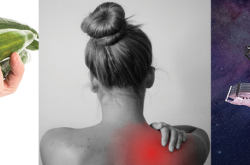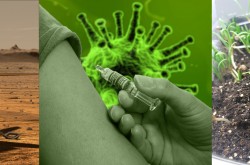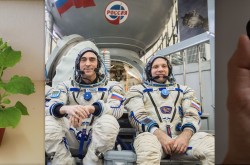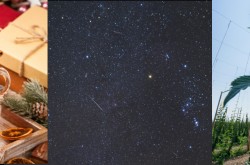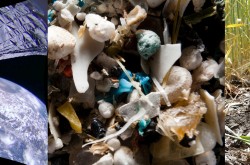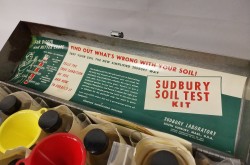3 things you should know — February edition


Meet Renée-Claude Goulet, Jesse Rogerson, and Michelle Campbell Mekarski.
They are Ingenium’s science advisors, providing expert scientific advice on key subjects relating to our three museums — the Canada Agriculture and Food Museum, the Canada Aviation and Space Museum, and the Canada Science and Technology Museum. In this colourful monthly blog series, Ingenium’s science advisors offer up three quirky nuggets related to their areas of expertise.
For the February edition, our science advisors explain the importance of the International Year of Plant Health, offer a snapshot of the fascinating experiments taking place aboard the ISS, and present some striking, scientific images.

A colourful lightning: The nerves and vasculature run alongside each other in this image showing the neurovascular network in a mouse’s skin. Neurons (red) guide not only their axon formation, but also blood vessels (green) into an organized network as new vasculature forms from the existing vessels in both development and adults. The signals shared by neurons and vessels can help us design targeted therapies against illnesses such as cancer, and engineer new organs that are structurally and functionally relevant (image description by Sila Appak Baskoy).
The power of pictures in science
Our universe is full of things that cannot be seen, touched, or even imagined. Think to yourself right now: can you feel the gravity of distant suns? Can you see the electrons zipping around you? Look at your skin; can you see the layer of bacteria covering you? We can’t see or feel any of that! And yet, because we understand gravity, we can understand the movement of planets. Being able to predict the behavior of electrons allows us to power our homes. Knowing about the reproduction of viruses helps us to fight and cure disease. We can accomplish amazing things with the science of things we cannot see.
As impressive as this is, trying to explain and share things we can’t even begin to picture is challenging! Humans are hugely visual creatures. Large portions of our brains are dedicated to visual processing which allows us to process, analyze, and learn from images very quickly (much faster than reading!). Images grab our attention more easily (did you look at the image or text first when you started reading this article?).
Images also help make things personal. Often, scientific findings — even important ones — just don’t seem relatable or important to us as individuals. We may not feel concerned about a particular disease because we are not emotionally invested in it. We may not care about the discovery of a new star because it is not part of our daily lives. Images help us engage with the science, making it feel real and important.
Perhaps this is why one of my favourite online science articles in any given year is the Science Exposed contest, organized by the Natural Sciences and Engineering Research Council of Canada (NSERC). Scientists submit an image and a short blurb which is judged by a jury and the public. The submission is evaluated based on the beauty, the research value, and the emotional quality of the image, with some consideration being given to the description.
Of the 2019 finalists, my personal favourite is an image of the nerves and blood vessels found in the skin of a mouse. Visually, it’s quite striking. Blood vessels (green) and neurons (red) flash across the image like some kind of fluorescent alien lightning. Scientifically, it’s also interesting that these two systems grow almost in parallel, because they are triggered by the same signals. Significantly, research like this could help scientists develop therapies for illness and grow replacement organs.
Science can be stunning, gross, unexpected, and even breathtaking. It’s also vital, novel, and ever-changing. Often, it takes a picture to help us remember that.
By Michelle Campbell Mekarski

Powdery mildew (in white) and yellow rust (in yellow-orange) are fungal diseases that affect wheat, a staple food, and greatly reduce yields.
International Year of Plant Health: Why it matters, and how you can help
Providing 98 percent of the oxygen we breathe and most of the food we eat (or, the food for the food we eat), it is undeniable that plants are essential to our survival. But just like us, plants get sick. This can have devastating effects on our food systems, and our capacity to feed a growing population. That’s why the United Nations has declared 2020 the International Year of Plant Health — a year dedicated to raising awareness about the urgent need to “protect plants, protect life.”
The main culprits affecting plant health are diseases and pests, which attack and weaken both wild and domesticated plants. In our agricultural systems, these cause huge losses, greatly reducing the quality and quantity of the food produced. In fact, the Food and Agriculture Organization estimates that pests and diseases are responsible for the loss of 40 percent of the crops produced globally every year. This is a growing problem — increased international travel and trade has helped diseases and pests spread faster and further. Our human activity and changing climate is disturbing ecological relationships, creating opportunities for them to thrive.
We don’t need to look far for examples of how poor plant health can threaten our food security or way of life. The Irish potato famine in 1845 was set off by late blight, a fungal disease that decimated potato harvests for several years, wiping out a staple food and causing an estimated one million deaths due to starvation. Currently, coffee rust — another fungal disease — is plaguing farms in all coffee-growing regions of the world, posing a real threat to this crop and the livelihood of coffee farmers.
Given the importance of plant health for food security, economic development, and the environment, we are all encouraged to take action. But what is an average person to do about plant health? Since prevention is the best medicine, simple things like not moving plants and soil across borders (i.e., through the mail, in a suitcase), and destroying sick plants in your home garden, can have a big impact. The UN has even made available free social media content that anyone can share to engage, inform, or simply show support for this collective effort! Happy year of plant health, everyone!
By Renée-Claude Goulet
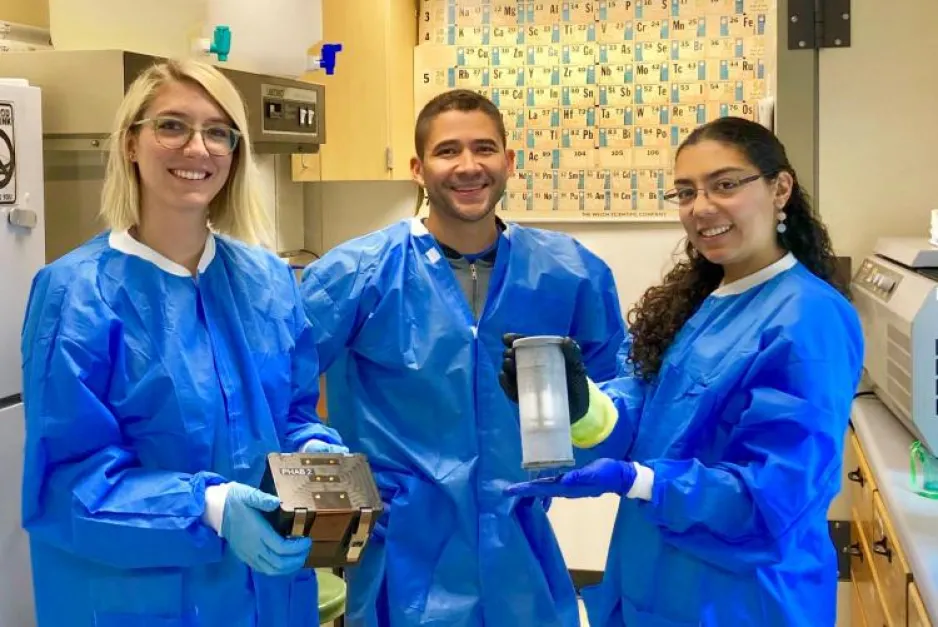
These three researchers from the University of Colorado are holding the bacteria and fungal containers that will be sent to the ISS.
Science in space
The International Space Station (ISS) is one of the most impressive things humanity has ever built. It orbits the Earth at a velocity of over 28,000 km/h, at an orbit height of 400 km. The five partnering agencies that created it (NASA, ROSCOSMOS, CSA, JAXA, and ESA) started building the station in 1998, and completed it in 2009. Now, it’s as large as a football field!
But what exactly is going on up there? The ISS has had a continuous human presence for almost 20 years, so what have those astronauts been doing up there all this time? As it turns out…a lot.
The ISS is a massive laboratory, constantly investigating questions related to how humans live and work in space. At any given moment, there are a large number of scientific experiments ongoing at the ISS; there are even six experiments being run by Canadian researchers right now. All the science going on at the ISS comes from a multitude of different research areas: biology and biotechnology, Earth and space science, educational activities, human research, physical science, and technology.
For example, an experiment that was running in early January 2020 on the ISS was the Space Biofilms project. A biofilm is a community of microbes that have attached to each other, and are able to attach and spread on to a variety of surfaces. If left unchecked, a biofilm can spread on surfaces that cause malfunctions (like within an important computer or safety system aboard the ISS). It’s important for scientists, engineers, and astronauts to understand how microbes act aboard the ISS to make space flight safer in the future, especially on longer missions to the Moon or Mars.
In the Space Biofilms experiment, researchers on the ground sent contained packs of frozen microbes that were thawed in space by astronauts. After growing and spreading within the contained packs, they were sent back to Earth, where researchers are now analyzing the results.
This is just one of hundreds of experiments that have been conducted aboard the ISS; and the incredible scientific work occurring hundreds of kilometres above our heads will make it easier and safer to live and work in space.
By Jesse Rogerson





